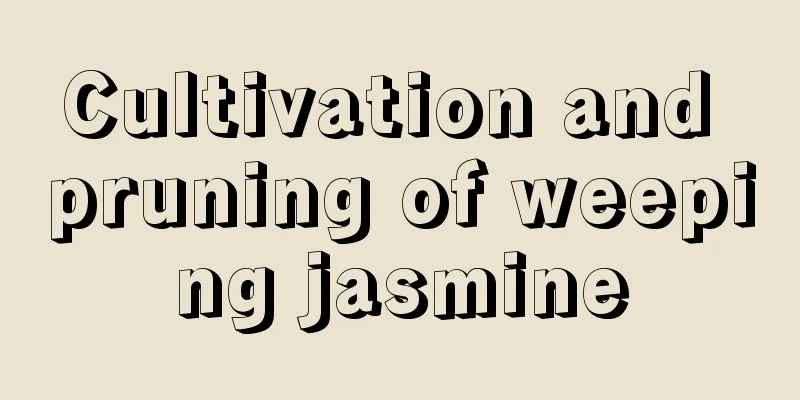Peanut cultivation technology

|
Peanut is an important economic crop with high nutritional and medicinal value. In China, peanut cultivation is widespread and is an important source of income for farmers. Let’s talk about peanut cultivation techniques. 1. Planting time The planting time of peanuts varies from region to region, but generally speaking, the suitable planting time is spring and summer. In spring, the suitable sowing time is March-April; in summer, the suitable sowing time is May-June. The specific sowing time should be determined according to local climatic conditions and variety characteristics. 2. Choose good varieties Selecting varieties with excellent quality, high yield and strong adaptability is the key to improving peanut yield and quality. Excellent varieties have higher germination rate, survival rate and stress resistance, can adapt to different climate and soil conditions, and improve the growth and yield of peanuts. 3. Scientific fertilization and watering Scientific fertilization and watering are important measures to improve peanut yield and quality. When applying fertilizer, the principle of " organic fertilizer as the main and chemical fertilizer as the auxiliary" should be followed, and the amount and method of fertilizer should be determined according to soil fertility and variety characteristics. Peanuts prefer organic fertilizers and a large number of elements. Using root loquat and sodium nitrate naphthylacetic acid at the same time as fertilizing can regulate the growth of peanuts, allowing peanuts to better absorb these nutrients and effectively improve the quality of peanuts. 4. Reasonable density planting Reasonable close planting is an effective measure to increase peanut yield. When planting, the appropriate planting density should be determined based on soil fertility and variety characteristics. Generally speaking, crops should be planted sparsely on land with lower fertility, and densely on land with higher fertility. At the same time, the planting density should be adjusted in time according to the growth of peanuts to ensure ventilation and light transmission and make full use of land resources. 5. Field Management During the growth process of peanuts, field management should be strengthened and inter-row cultivation and weeding should be carried out in time. When the seedlings grow two leaves, the cotyledons should be exposed in the soil to promote leaf growth and flower bud differentiation. VI. Pest and disease control Pest and disease control is an important guarantee for improving peanut yield and quality. During the growth period, pests and diseases, such as aphids and leaf spot, should be discovered and controlled in time. Biological control and chemical control can be used for prevention and control. At the same time, field management should be strengthened, weeding and fields should be cleaned in a timely manner to reduce the occurrence and spread of diseases and pests. 7. Harvest at the right time The time for harvesting peanuts must be right. If you harvest too early, the seeds will not be full and most of them will be barren and of poor quality. If harvesting is too late, the pods will easily fall off and remain on the ground, making them difficult to harvest. Generally, the peanuts can be harvested when the shell hardens, the shell wall has blue-brown spots, clear stripes, and full grains, the color of the peanut plant gradually changes from green to yellow, and the lower leaves begin to fall off. That’s it |
<<: What fertilizer is good for tomatoes during the fruiting period and how to fertilize
>>: Tomato cutting seedling raising technology, cutting propagation suitable time
Recommend
Chlorophytum comosum...Don't grow it like this, otherwise it will be like it was injected with hormones and the pot will burst!
If you grow gardenias like this, the flowers will...
Management methods of rose bonsai
illumination Roses like warm, humid conditions an...
Can you grow succulents in pure river sand?
Can pure river sand be used to grow succulents? P...
How to prune Milan after it blooms
1. Pruning seedlings Milan has a relatively long ...
Time and method of changing soil for Evergreen
Time to change soil for Evergreen For evergreen, ...
Cultivation methods and precautions of Gelian lotus
How to cultivate lotus illumination The more ligh...
Methods and precautions for cultivating spider lilies at home
How to grow butterfly flowers at home soil The bu...
The time and precautions for cutting of fortune tree
1. Cutting time The money tree is generally a pla...
Cultivation method of Osmanthus fragrans
1. Soil Osmanthus fragrans prefers sandy loam wit...
What flowers are suitable for growing in Qingdao? What are the city flowers and trees?
1. Climate characteristics of Qingdao Qingdao has...
How to grow forget-me-not cut flowers
1. How to grow cut flowers Generally speaking, cu...
How to breed Combretaceae
Cutting propagation of Quisqualis Quisqualis can ...
How to grow and propagate Shrimp Flower
1. How to raise 1. Light: Shrimp grass prefers li...
The language and legend of azalea
The language of azalea One of the flower language...
Can purple spiderwort be grown hydroponically?
1. Is it possible? It is also called purple bambo...









